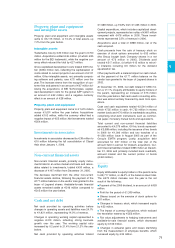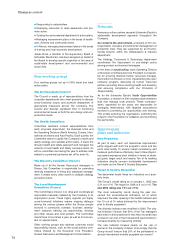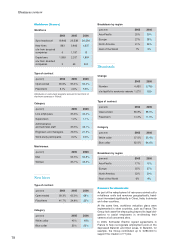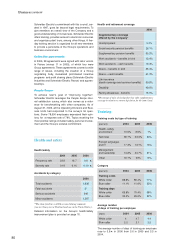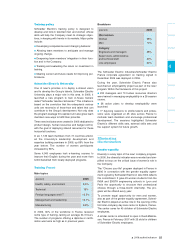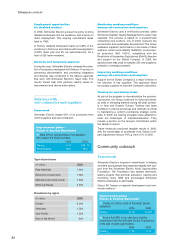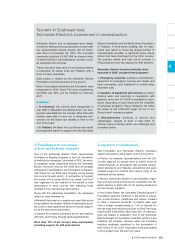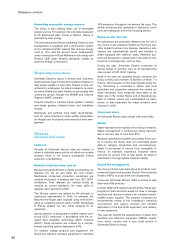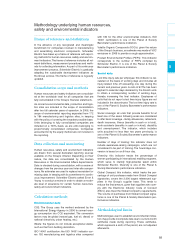APC 2006 Annual Report Download - page 83
Download and view the complete annual report
Please find page 83 of the 2006 APC annual report below. You can navigate through the pages in the report by either clicking on the pages listed below, or by using the keyword search tool below to find specific information within the annual report.
2006 audited indicators
81
4
Breakdown
(percent)
2006
Men/ women
Women 28%
Men 72%
Category
Engineers and managers 28%
Supervisors, administrative
and technical staff 40%
Line employees 32%
Training (France)
Main topics
(percent)
2006
Health, safety, environment 8.5%
Technical 19%
Foreign languages and IT 13.5%
Management and leadership 12.1%
Manufacturing 9.9%
In 2006, 60% of the workforce in France received
some type of training, lasting an average 24.3 hours.
The number of programs offering a diploma or certifi-
cation was twice as high as in previous years.
Training policy
Schneider Electric’s training policy is designed to
develop and lock-in talented men and women whose
skills will help the Company meet its strategic objec-
tives, in keeping with trends in its markets. Major paths
include:
Developing competencies and changing behavior.
Allowing team members to anticipate and manage
ongoing change.
Deepening team members’ integration in their func-
tion and in the Company.
Tracking and evaluating the return on investment in
training.
Meeting current and future needs for improving per-
formance.
Schneider Electric University
One of new2’s priorities is to deploy a shared vision
and to develop the Group’s talents. Schneider Electric
University plays a major role in this area. In 2006, it
launched a new program to train in-house trainers
called "Schneider teaches Schneider." This initiative is
based on the conviction that the enterprise’s various
units are reservoirs of know-how and talent that can
contribute to the Group’s development. Not only does
the program leverage this capital, but it also gives team
members new ways to fulfill their potential.
Three new institutes were created in 2006 dedicated to
product design, human resources and budget control,
with the goal of deploying shared resources for these
horizontal functions.
In all, 1,126 team members from 72 countries attend-
ed the University’s leadership development and
expertise building seminars in 2006, up 66% from the
year before. The number of women participants
increased by 85%.
Some 4,000 employees took e-learning courses to
improve their English during the year and more than
6,000 benefited from locally deployed programs.
The Schneider Electric Industries/Schneider Electric
France corporate agreement on training signed in
December 2005 was deployed in 2006.
During the year, Schneider Electric France also
launched an employability project as part of the new2
program. Within the framework of this project:
200 managers and 70 human resources directors
were trained in managing employability in a 26-session
course.
38 action plans to develop employability were
launched.
77 day-long sessions to profile talents and profes-
sions were organized at 45 sites across France to
motivate team members and encourage professional
development. The sessions highlighted Schneider
Electric’s different skills sets, external skills sets and
the support system for future growth.
Eliminating
discrimination
Gender equality
Diversity is a key topic of the new2company program.
In 2006, the diversity indicator was re-worded and sim-
plified to focus on the critical issue of women’s role in
the Company.
The "Choose your life" program deployed in France in
2006 in connection with the gender equality agree-
ment signed by Schneider Electric in late 2004 reflects
this commitment. It gave 20 women students from the
INSA and ENSTA engineering schools in Lyon and
Paris the opportunity to structure their professional
choices through a three-month internship. The pro-
gram will be offered every year.
To promote equal opportunity for men and women,
also as part of the gender equality agreement, Schnei-
der Electric played an active role in the opening of the
first inter-company day care center in Eybens, France.
The center cares for 45 children of Schneider Electric
employees.
A similar center is scheduled to open in Rueil-Malmai-
son, France in February 2007 with 25 slots for children
of Schneider Electric employees.


